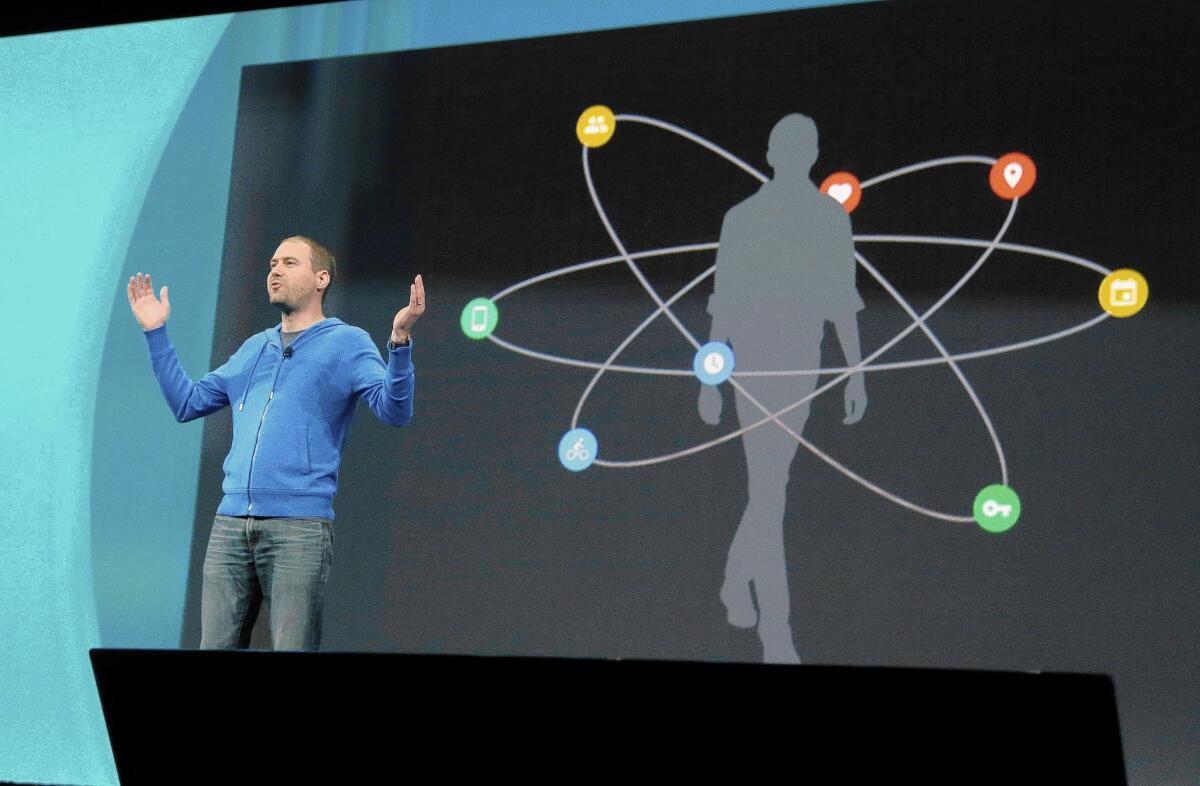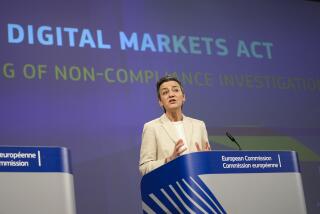Google unveils products, updates that tie everything together

Google wants to be everywhere in your life, all the time.
In a marathon keynote address Wednesday at Google I/O 2014, its annual developers conference, the Mountain View, Calif., company rolled out a mix of new products and updates to older ones.
But the pile of details added up to a basic message: The company now offers a breadth of products and services that will (Google hopes) work in harmony whether you’re working, playing or in transit between the two.
Whether it’s smartwatches, smartphones, tablets, connected cars, laptops or interactive TV, Google said its Internet services and a new version of its Android mobile operating system would increasingly tie everything together.
“I see this as an evolutionary move,” said Patrick Moorhead, principal analyst at Moor Insights & Strategy. “There weren’t things that made you say that this is new and unique. It’s about making the things that Google does work better.”
Broadly, it’s similar to the message offered earlier this month by Apple at its own annual developers conference. No single eye-catching product was rolled out. Instead, in a world where smartphones and tablets are woven through the fabric of everyday life, companies are trying to figure out how to help consumers get more out of what they have.
The foundation of Google’s latest effort will be Android L, the latest version of its Android operating system. Developers got their hands on it Wednesday, and it’s scheduled to be released to the public later this year.
The company also showed off the first smartwatches based on its Android Wear development platform, as well as Google Fit, a programming tool for developers to pull data into apps from sensors, similar to the Nike+ FuelBand.
About 6,000 developers attended the event in San Francisco. In the last year, Google said, it has paid developers around the world $5 billion for purchases related to their apps. The crowd was pleased to learn each attendee would receive a new smartwatch.
But it is the smartphone, apparently, that will constitute the center of Google’s everything-connected ecosystem. Smartphones could control streaming video and game apps that would display on televisions through Android TV. Sony and Sharp televisions and streaming boxes, similar to Roku or Apple TV but built by several manufacturers, will incorporate Android TV in the coming months.
The TV-focused operating system follows up on Google’s successful Chromecast stick, which can be plugged into an HDMI port on a television to stream videos, music and websites.
Google said it wasn’t abandoning Chromecast, announcing a feature Wednesday that allows devices to control Chromecast through a cellphone connection in addition to Wi-Fi. An update to Chromecast will allow a broader range of apps to be displayed on televisions.
Android Wear will allow smartwatch users to accept or reject phone calls, take notes and see other notifications without having to take out or unlock their phones.
The LG G and Samsung Gear Live smartwatches, based on Android Wear, began selling Wednesday.
In cars, Android Auto would use smartphones to power entertainment systems with an emphasis on navigation, communication and music apps.
Google spent much of its two-hour keynote address discussing its Android platform for smartphones and tablets. The L version of the operating system will include a “fresh and bold new” set of shadowed visuals and typography, Google said.
More than 1 billion people use an Android-powered device each month, Sundar Pichai, the company’s senior vice president for Android, Chrome and apps, said Wednesday.
The speedier, new version of Android adds a series of animations, including ripple effects when someone taps a number on the phone-dialer app, swifter swipes between different features and shadows that offer perspective to the images on the flat screen. Despite the graphical and computing improvements, the operating system will be less draining on batteries, Google said.
Drawing some of the loudest applause from developers was a feature that allows notifications, such as an incoming phone call, to pop up on top of an open app and be dismissed by the user without having to lose a beat in the open app.
“I was impressed with the way they tied this all together,” said Jeffrey Hammond, a Forester Research analyst. “You can see how all of this technology lets developers move across all of these platforms.”
Smartphone apps will soon appear on Google’s line of laptops, known as Chromebooks. Google showed off how a Chromebook user could post to the video-sharing app Vine using the laptop’s camera.
Google made several announcements geared toward business customers Wednesday. The Android for Work feature will split devices into separate profiles for corporate and personal apps, and a suite of productivity apps such as Google Docs now has encryption of data in transit and storage.
O’Brien reported from San Francisco; Dave from Los Angeles.







